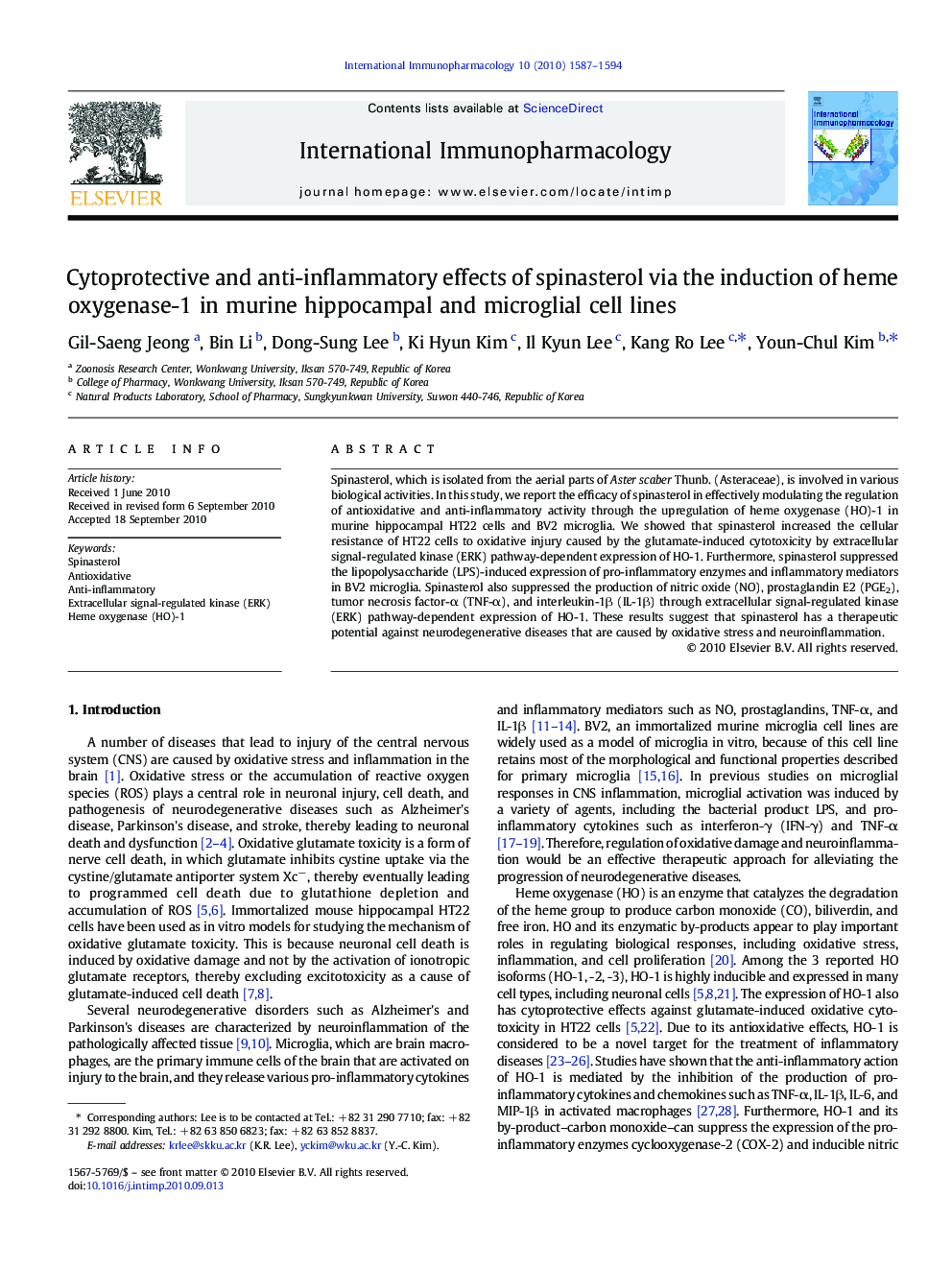| Article ID | Journal | Published Year | Pages | File Type |
|---|---|---|---|---|
| 2541394 | International Immunopharmacology | 2010 | 8 Pages |
Spinasterol, which is isolated from the aerial parts of Aster scaber Thunb. (Asteraceae), is involved in various biological activities. In this study, we report the efficacy of spinasterol in effectively modulating the regulation of antioxidative and anti-inflammatory activity through the upregulation of heme oxygenase (HO)-1 in murine hippocampal HT22 cells and BV2 microglia. We showed that spinasterol increased the cellular resistance of HT22 cells to oxidative injury caused by the glutamate-induced cytotoxicity by extracellular signal-regulated kinase (ERK) pathway-dependent expression of HO-1. Furthermore, spinasterol suppressed the lipopolysaccharide (LPS)-induced expression of pro-inflammatory enzymes and inflammatory mediators in BV2 microglia. Spinasterol also suppressed the production of nitric oxide (NO), prostaglandin E2 (PGE2), tumor necrosis factor-α (TNF-α), and interleukin-1β (IL-1β) through extracellular signal-regulated kinase (ERK) pathway-dependent expression of HO-1. These results suggest that spinasterol has a therapeutic potential against neurodegenerative diseases that are caused by oxidative stress and neuroinflammation.
Research Highlights► Cytoprotective effects of spinasterol in HT22 cells. ► Anti-inflammatory activity of spinasterol in microglial activation. ► Spinasterol showed cytoprotecitve and anti-inflammatory effects via HO-1/ERK pathway.
